‘Fashioning San Francisco’ Highlights Patrons Who Shaped City’s Style
- Oops!Something went wrong.Please try again later.
- Oops!Something went wrong.Please try again later.

In a time when fashion brands pay celebrities and influencers to wear their clothes, true patrons of designers — as well as museums — are seldom discussed anymore. But in San Francisco, a new exhibition is celebrating patrons such as Ethel Sperry Crocker, Eleanor Christenon de Guigne, Jeanne Magnin, Georgette “Dodi” Rosekrans, Denise Hale, Christine Suppes and now Sherri McMullen, who put the city on the international style map.
“Fashioning San Francisco: A Century of Style” at the De Young Museum, from Saturday to Aug. 11, looks at their museum bequests and the permanent collection’s holdings of luxury ballgowns, Little Black Dresses, bohemian and avant-garde looks by Callot Soeurs, Lucile, Yves Saint Laurent, Dior, Ralph Rucci, John Galliano, Rodarte, Kaisik Wong, Christopher John Rogers and many more.
More from WWD
EXCLUSIVE: Dior's Maria Grazia Chiuri to Receive Neiman's Distinguished Service Award
EXCLUSIVE: Dior Relaunches 20-year-old Chiffre Rouge Men's Watch Line
Balenciaga, Chanel and Dior Helped Dress the Cast of 'Cristóbal Balenciaga'
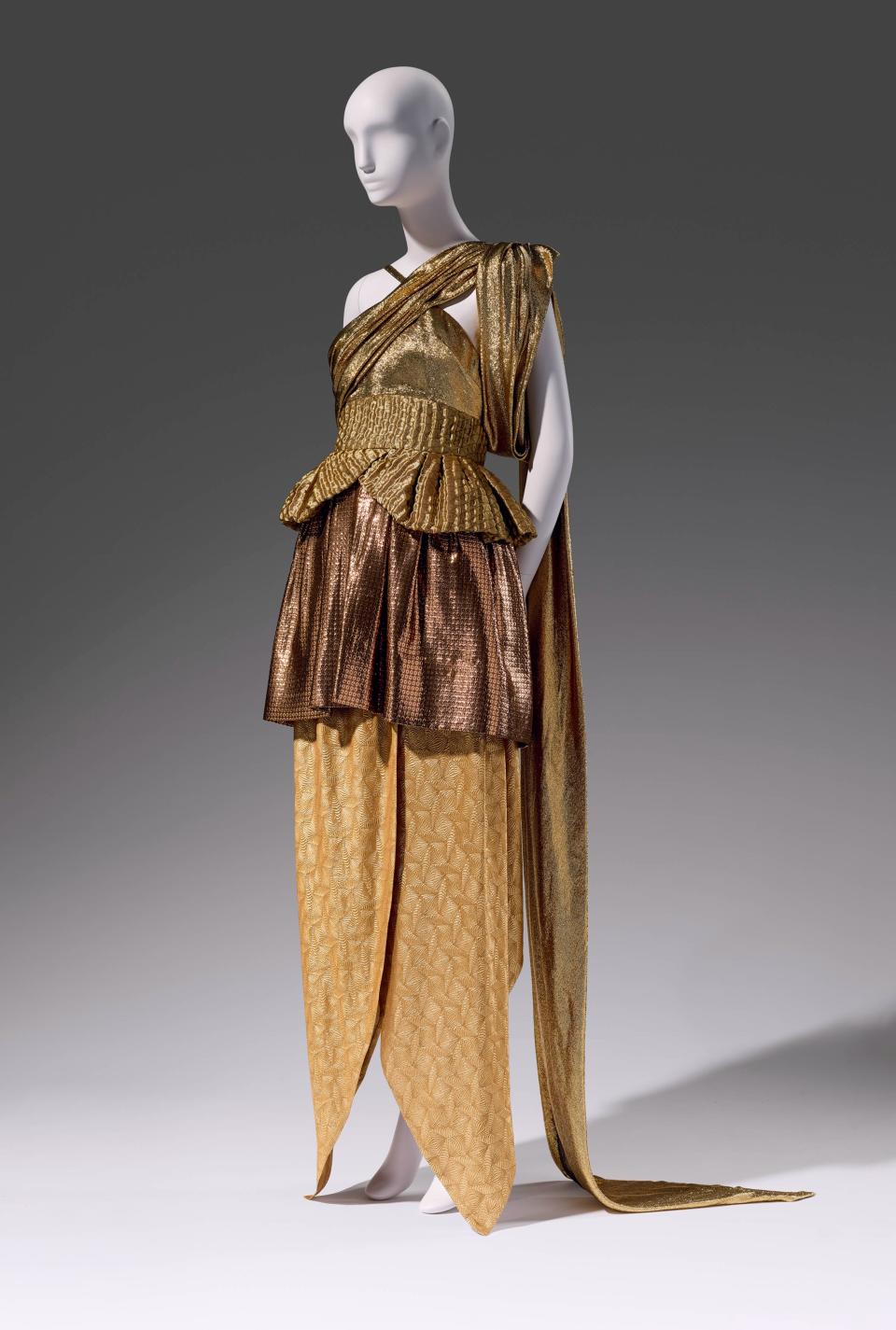
Using more than 100 ensembles, curator Laura Camerlengo touches on several themes, beginning with how fashion played a part in signaling the rebirth of the city after its formative natural disasters, the 1906 earthquake and fire that destroyed 80 percent of the area.
Within days, merchants set up a temporary retail zone to serve the Gold Rush-flush San Francisco, and the recovery culminated in the Panama Pacific International Exposition in 1915, featuring several fashions from French couturiers and American designers. Party looks such as a resplendent 1921 blue and black Lucile evening dress with flower garland detail were symbolic of the region’s resilience, refinement and bohemian tendencies.

The retailing — and wearing — of French fashion shaped San Francisco’s cosmopolitan identity through the early 20th century, so much so that the first French dresses to be imported after World War II, including a 1946 Jacques Costet velvet and silk Little Black Dress on display that was retailed by I. Magnin, was front page news in the San Francisco Chronicle.
Bay Area department stores, most notably I. Magnin, signed agreements to copy and retail French couture to the society set. The museum’s costume collection particularly benefitted from the patronage of Grover Magnin (I. Magnin was founded by his parents) and his wife, Jeanne, a former model and close friend of Christian Dior. Among their donations are the stunning Venus and Junon gowns from Dior’s 1949 fall couture collection, which toured the West Coast as part of the store’s traveling fashion exhibitions. With their petal-shaped skirts and glittering sequins, they would look right at home on a 2024 red carpet.

In many cases, local donors had close relationships with designers, supporting them not only by buying their clothes but financing runway collections and businesses. Georgette “Dodie” Rosekrans financed the early collections of John Galliano, and his Dior spring 1999 couture suit, designed to be worn backward, is among her several avant-garde looks on display.
Two promised gifts from Hale are on view, including a gown by Irish designer Sybil Connolly, which the philanthropist and Best Dressed Hall of Famer wore when Queen Elizabeth came to the museum for a state dinner.
And Tatiana Sorokko, a model and muse to Ralph Rucci, is represented through her fall 2007 couture digitally printed infanta gown, worn to the San Francisco Symphony Opening Night Gala. Another major donor, Christine Suppes has several looks on display by Alexander McQueen, Vivienne Westwood and Rodarte, which she has supported.
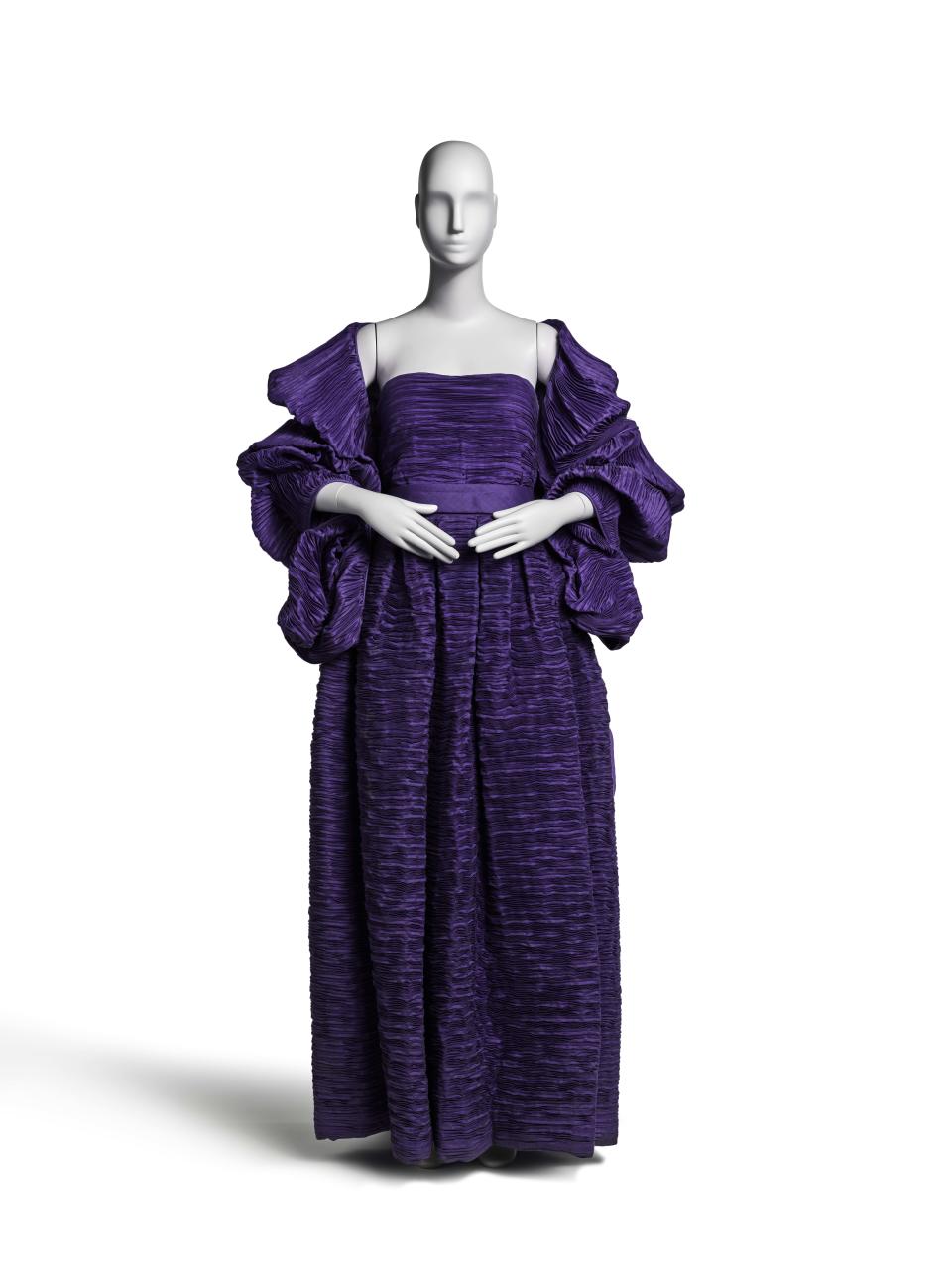
“There are a lot of women here not only interested in fashion as the act of wearing clothing, but really in supporting the industry,” Camerlengo said.
While many of the city’s fashion patrons were white, and born into or married into wealth, the exhibition aims to demonstrate how that’s changing by including two Christopher John Rogers looks donated by Black tastemaker Sherri McMullen, who has supported the designer from the beginning through her Oakland store. Also included is a dramatic gold-embroidered green gown with puffed sleeves by Edwin Oudshoorn worn to a ballet gala by Silicon Valley executive Tanum Davis Bohen.

One wishes, however, that there was space devoted to fleshing out the biographies of all of these women, perhaps with more photographs of them wearing the designs by Chanel, Bill Blass, Yohji Yamamoto and more.
Throughout, Camerlengo considers the enduring influence of the Pacific Rim on European and American designer inspirations (and appropriation), and on local immigration. The work of two prominent Chinese American San Francisco designers is spotlighted — Kaisik Wong, who emerged out of the art-to-wear movement in the 1970s and is best known for a patchwork vest that was copied by Nicolas Ghesquière at Balenciaga, and the more traditional dressmaker Richard Tam.

“Richard Tam by the 1960s and ’70s emerged as a top designer in the U.S. making clothes for women here but also Ethel Kennedy and Dinah Shore,” the curator said. “He operated as a couture designer, and I’ve seen things on the market attributed to Balenciaga that were a Tam design, going back to the 1960s.
“It’s an amazing opportunity to celebrate their work,” she said of Wong and Tam. “Both designers died very young, and their stories have been somewhat lost in traditional histories and narratives, and are also deeply meaningful for our communities who still remember them. I would love to have a big show of Tam’s work, which is housed at the Met, the museum at FIT and other major museums but has never had a comprehensive study.”
These are the forebearerers of other Asian American designers, among them Derek Lam and Alexander Wang, both from the Bay Area.
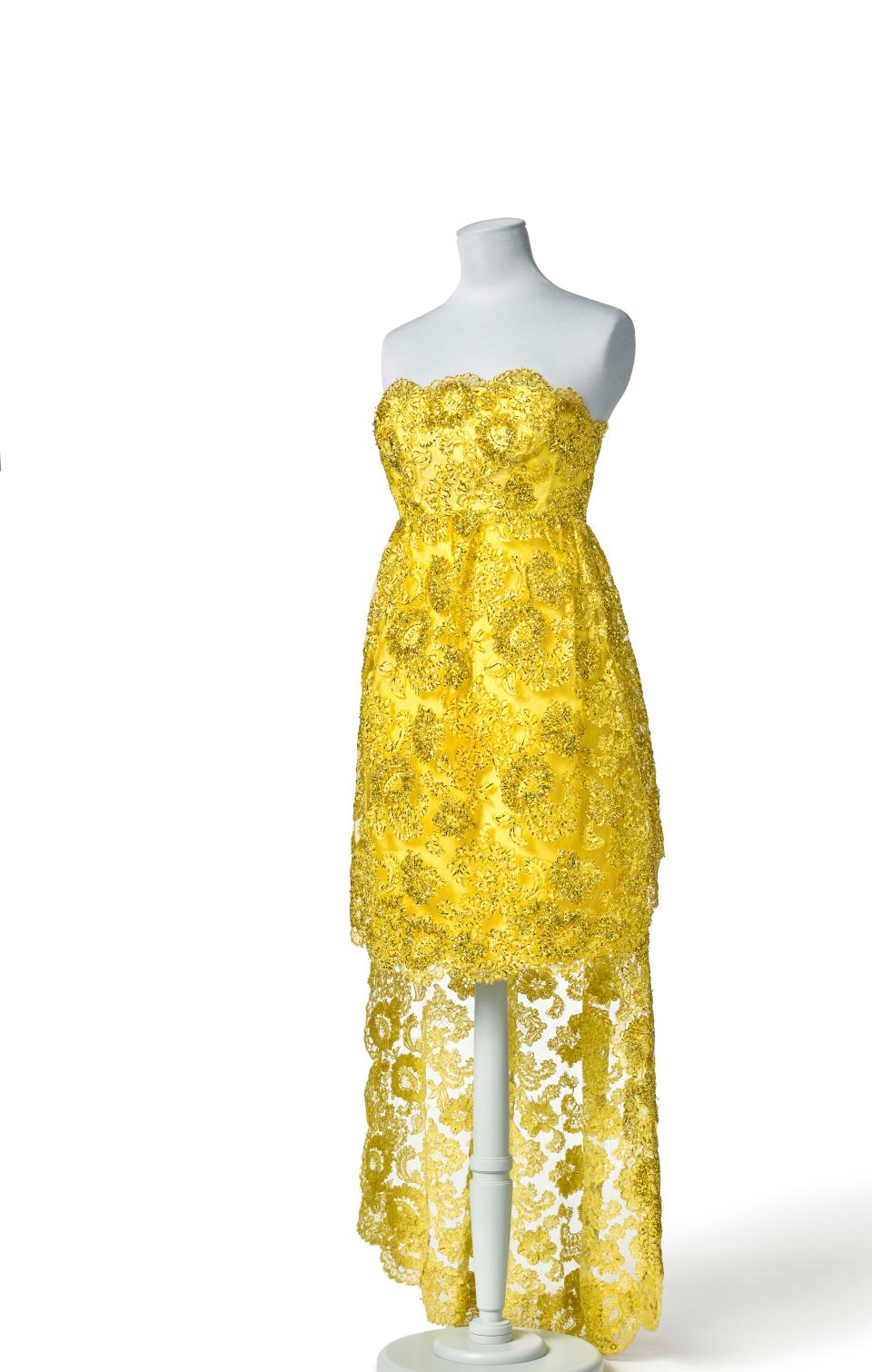
Camerlengo is not out to define San Francisco style, she said. “There are those who buy the best of French fashion who import into the city and there are women who make their own clothes, and women who can’t work with a bustle and use newspaper to fill a skirt, and those who wear traditional cultural clothing,” she said of the range. “That is representative of how San Francisco continues to dress today. What you see in the timeline is people like Sherri McMullen and Tanum Davis Bohen, self-made women, and how they tie back into the long thread of women who emerge in the public sphere in San Francisco in different ways.”
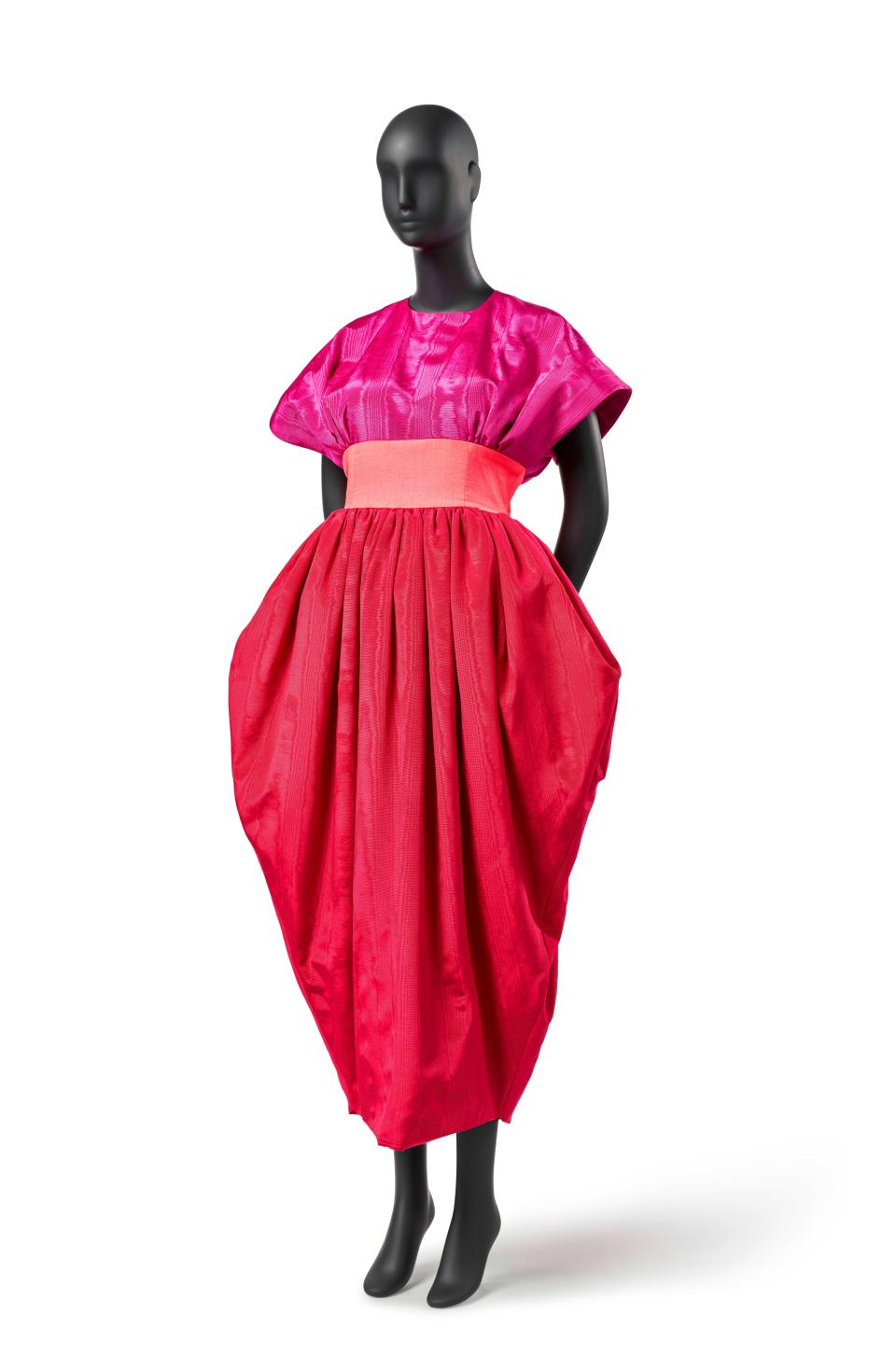
Another such woman today would be Anna Chiu, cofounder of the San Francisco fashion brand Kamperett, which recently dressed Awkwafina, Abby Elliott and Diane Lane for awards season events, and whose sheer silk organza volume dresses and blouses with considered details, such as qipao-inspired tie closures, architectural sleeves and intricate seams, are beloved by style-makers in the Bay Area and beyond.
“It’s inspiring. the level of intricacy and imagining the people who wore these,” Chiu said while viewing the collection on Wednesday morning.
It would be interesting to see the exhibition’s dialogue continue with contemporary Bay Area labels, she agreed, including sustainable ones coming up with solutions to the natural disasters of today, and perhaps San Francisco-born Levi’s, which has done more than almost any brand to democratize fashion.
For now, visitors in search of that can take advantage of the museum’s partnership with tech firm Snapchat on a virtual try on experience featuring three AR mirrors with exhibition looks by Dior, Valentino and Wong.
As Thomas P. Campbell, director and chief executive officer of the Fine Arts Museums of San Francisco, said, “When we’re trying to make museums open and friendly, fashion can be important…and with all of these fragile clothes that cannot be touched, it seemed like an amazing opportunity.”
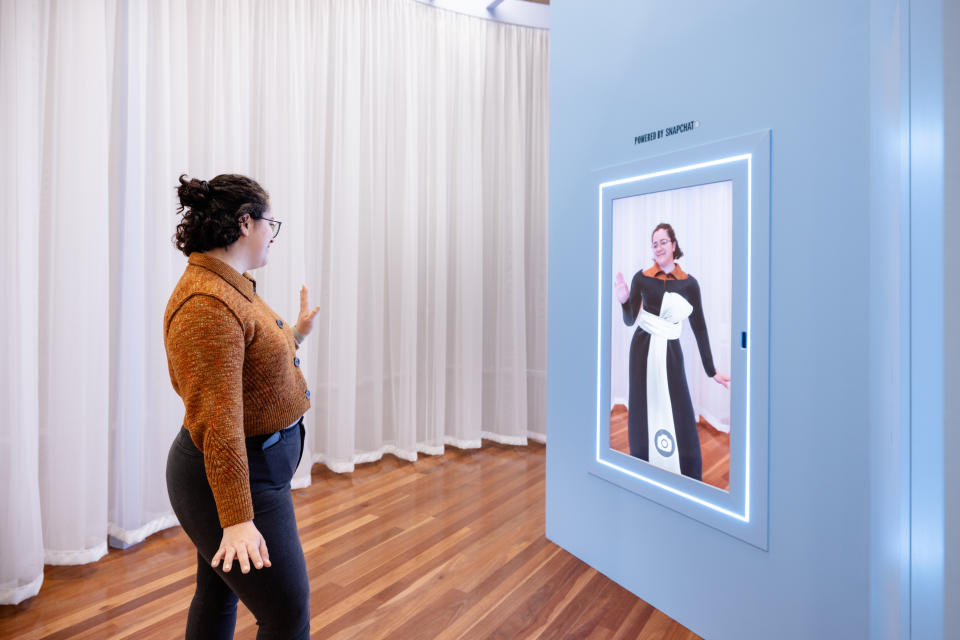
Best of WWD

